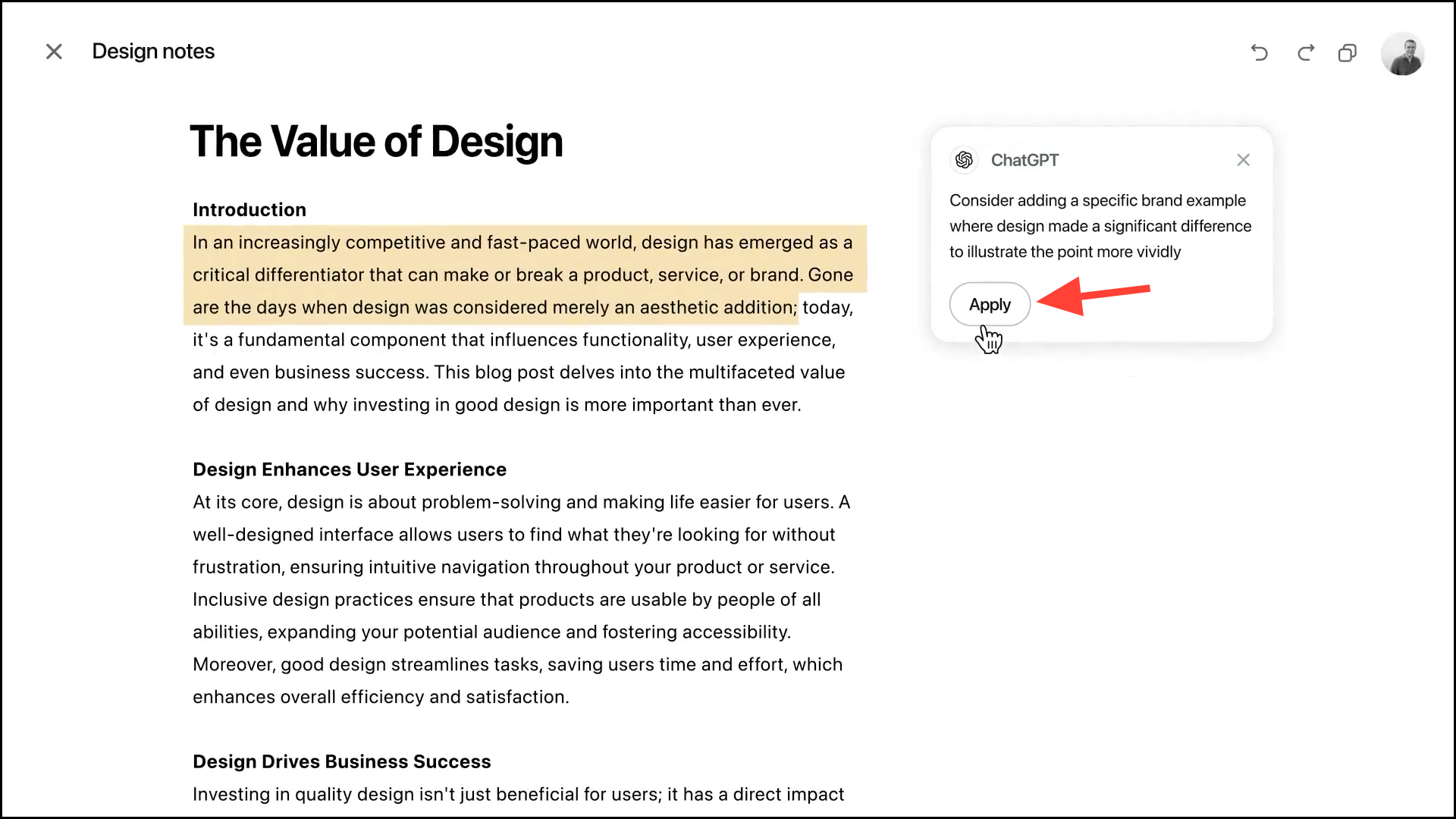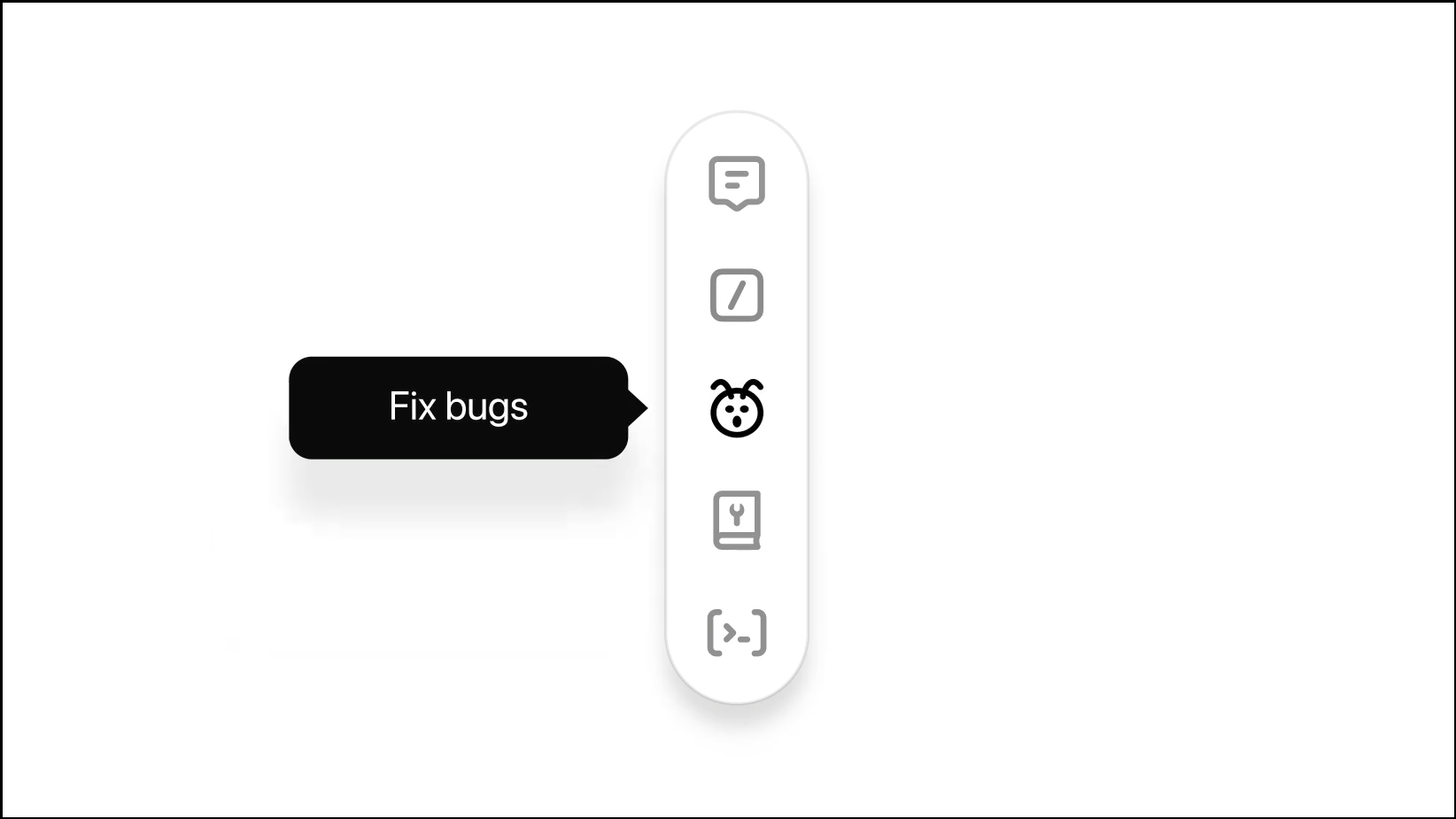OpenAI recently introduced a major interface change for ChatGPT in the form of Canvas. On the surface, the feature reminds one of an existing feature present in another artificial intelligence chatbot – Artifacts in Claude. Anthropic AI introduced Artifacts a few months ago and it'll suffice to say that the feature has been most positively received.
While both Canvas and Artifacts share the property of opening in a separate window within your chat with the AI, their features – and consequently, what they can be used for – vary widely. Here's how they both differ.
Creation
The creation process for both is not too different. Both ChatGPT and Claude can automatically trigger a Canvas and an Artifact, respectively, when required. You can also request the chatbot to create one in your request.
ChatGPT also allows you to also request it to create a blank Canvas where you can paste any content you want to work on which keeps the chat neat.
You can also make such a request to Claude and it will create a blank Artifact but that won't be too useful (since you can't edit an Artifact). However, with Claude, anything you paste into the prompt-box is treated as a file, so there's no problem of an untidy chat there either.
When it comes to creating a Canvas or Artifact, both fare equally fine.
Making Edits
Both Canva and Artifact aim to improve collaboration with the chatbot by showing the content in a separate window. But there are significant differences in how they approach it.
Manual editing
The content in the ChatGPT Canvas interface is available for both you and the chatbot to make edits. It's like editing the text in any text editor; you make any changes you want and can continue collaborating on it with ChatGPT as well.
However, the Artifacts window in Claude is largely only for viewing rather than editing; only Claude can make the changes to the content. If you want to make any changes to the content, you'll need to copy-paste it into another editor, make the changes, and paste it into Claude again for further collaboration.
Targeted edits and rewrites
There's also a difference in the degree of the changes both ChatGPT and Claude can make to their respective content.
With Canvas, OpenAI has allowed ChatGPT to make smaller edits to the content upon receiving user feedback instead of diving into rewrites every time. Whether it's written content or code, this surgical precision in edits on the part of ChatGPT makes it easier for users to track the changes when smaller edits are required. It's indeed a much-appreciated change.
To be honest, it's more than just an interface change. Canvas has been built with GPT-40. For the implementation of Canvas, OpenAI says that GPT-4o has been trained to collaborate as a creative partner. It knows when to open the Canvas, when to make targeted edits, and when to go for a full rewrite.
However, Claude cannot make small edits to Artifacts and it always jumps into rewrites when edits are needed. It is a relatively slower process which can sometimes be annoying. Claude also ends up making changes to the content where you didn't want it to.
Now, when something needs to be added to the end of the document, Claude can skip rewriting the beginning and create an Artifact informing the user that the first part is the same. Users can select between different Artifact versions meaning that both the previous and new content are available.
However, ChatGPT's approach is definitely miles better in terms of how convenient it is to handle the finished output when you've only made smaller edits. Like Canvas, ChatGPT can also rewrite the content on the Canvas when larger edits are required and you can also access all the versions.
Suggesting edits
Another perk with ChatGPT's Canvas is that it can also suggest inline edits to the users to improve the content when the user selects something.

Claude is missing any such ability. The only available options, when you select text in an Artifact, are to ask Claude to either improve or explain the highlighted part. Now, Claude can make edits only to the highlighted part, but as I said above, this includes generating a new version of the Artifact, instead of making changes in continuity.

Interface
The general interface for both is largely the same, with the chat available on the left and Canvas/ Artifact available on the right.
But Canvas has a few additional dedicated buttons in its interface, different for writing and coding projects. The entire point of these buttons is to make it easier to ask for certain edits. For example, when writing, you have options for changing the tone or length of the document. Similarly, while coding, you can use the menu to debug the code, add comments, or transform it to another language.

Now, they don't bring any exclusive functionality that you can't get in Claude. You can ask Claude for any of these edits at any time. But that's the thing – with Claude, you have to manually ask for these edits with prompts. But Canvas certainly makes the process easier.
Overall, when it comes to edits, ChatGPT's Canvas is a clear winner. It is a far better collaborator than Claude's Artifacts and it's because it's designed that way.
Real-time Previews
Now, Claude's Artifacts is not without its strengths. While the Artifact window opens similarly to ChatGPT's Canvas, it shines because of how it handles real-time execution for coding.
Whether you're using Claude to help with code snippets or whipping up websites, diagrams, flowcharts, SVG (Scalable Vector Graphic) images, or interactive react components, you can see the output in the artifact window in real time.
This, sadly, is not possible with ChatGPT (yet?). After generating any code in ChatGPT, you'll need to copy-paste it into an external editor and run it to preview the results. With Artifacts, the process becomes much faster as you don't need to switch platforms all the time.
As the feature is still in beta, there's a chance a future iteration of it might get this implementation. But in its current state, this gives Claude a certain edge.
Users can also directly share or publish the Artifact itself with others, which is an added advantage. Canvas is a place where you can work whereas Artifact is more like a standalone object that the AI generates for you.
Which is better?
Since the two tools are so different, this would be the wrong question. Instead, the question you should be asking is which is better for you? And the answer would depend on your use case.
For writing, I'd say ChatGPT's Canvas clearly has the odds in its favor because it certainly makes hands-on collaboration far easier. But when it comes to coding projects, Claude's Artifacts have an edge, especially if you're working on smaller projects. However, if you're working on something that's going to require a lot of edits, ChatGPT's Canvas would fare better.
Another thing you can factor in is availability. Canvas is currently only available with a paid plan. While OpenAI plans to make the feature available to free users once it's out of beta, Claude's Artifacts are available right now for free users.
However, for serious projects, that's hardly a thing to consider since the query limit for free users for Sonnet 3.5 (the model that Artifacts are available with) is comically small (yes, a lot smaller than GPT-4o's free limit). So, in any case, you need a subscription for both ChatGPT and Claude, which costs $20/month, to use either of them seriously.

